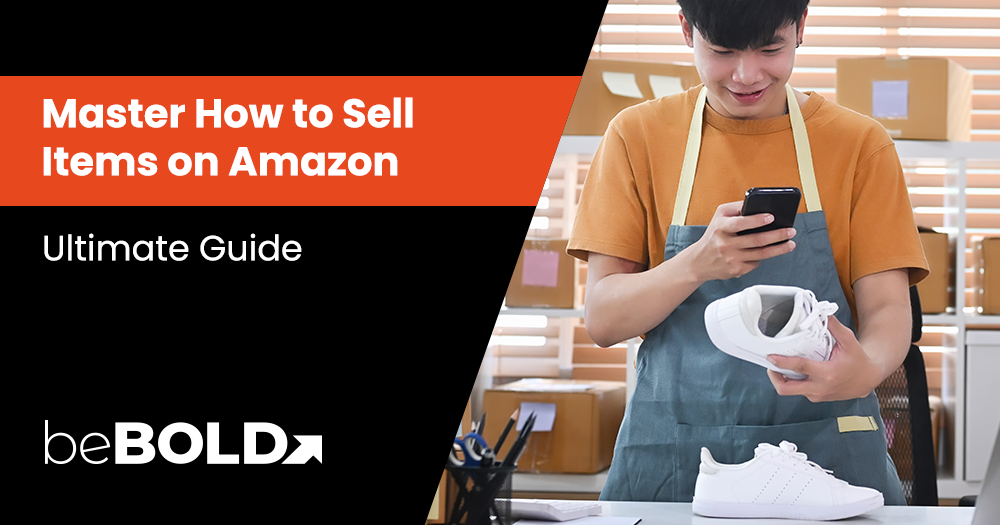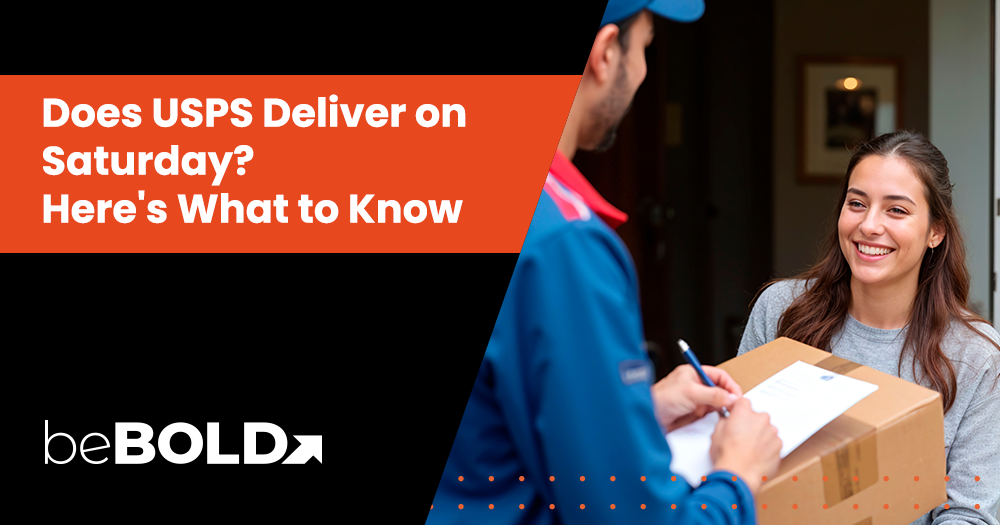As one of the world's most-visited websites with a customer base spanning numerous countries, Amazon provides an excellent platform for individuals and companies wishing to reach a broad global audience. While the number of customers on the platform continues to grow, the number of sellers has also seen a recent increase. If you're too thinking about how you can sell things on Amazon, we understand how overwhelming it can feel at first.
Thus, we've compiled this comprehensive guide. Whether you're new to e-commerce, a small business owner looking to expand your audience, or an experienced seller eager to boost your Amazon sales, this guide is designed with you in mind.
So, let's start with it as we provide a step-by-step guide on conducting market research, reviewing bestseller lists, setting up an Amazon seller central account, ensuring product optimization, and much more.
What Are the Two Selling Methods on Amazon?
Amazon provides its sellers with two distinct fulfillment options: Fulfilled by Amazon (FBA) and Fulfilled by Merchant (FBM), also known as 'Ship Products Yourself'. Let’s learn more about them.
Fulfilled by Amazon (FBA)

With the Fulfilled By Amazon (FBA) program, you store your products in Amazon fulfillment centers, and Amazon takes responsibility for storage, packaging, and shipping. This option comes with the benefit of Amazon's renowned customer service and return handling. Plus, your products become eligible for Amazon Prime, potentially boosting sales due to the many Prime members.
However, it's important to note that Amazon FBA involves additional fees, including your monthly service and inventory storage fees. This method is best suited for sellers with small, lightweight items with a rapid turnover. But remember, you will be less in control of your inventory management as Amazon handles the fulfillment aspect.
Fulfilled by Merchant (FBM)

With the Fulfilled by Merchant (FBM) method, you retain complete control over your storage, packaging, and shipping, as well as customer service. This might be the better choice if your product range consists of bulky, slow-moving items, as you won't have to worry about accumulating long-term storage costs at Amazon warehouse.
Moreover, you would not have to bear Amazon's service fees associated with FBA. But note that handling everything yourself means dedicating substantial time and resources to these tasks, including managing customer inquiries and potential issues promptly and professionally.
What Are the Step-by-Step Guide to Start Selling on Amazon?
Starting an Amazon selling journey entails a series of steps that are vital to ensuring your business's success. From conducting market research and scrutinizing bestsellers' lists to meticulously deciding on a professional selling plan and creating a comprehensive business strategy, every step requires careful thought. Here’s to know everything about how you sell products on Amazon.

1. Conduct Market Research
Before setting up your Amazon brand store, it is important to undertake comprehensive market research to determine which products have the potential to be profitable and align with your business strategy. A few popular selections of items sold on Amazon include those who sell food and sell toys. Start by reviewing Amazon's Restricted Products List, as some categories, like jewelry and DVDs, require approval before listing, while others, such as certain items that sell groceries or sell supplements, are completely prohibited. Understanding these guidelines is crucial when selecting your products.
Next, analyze the competition for your chosen items by examining top listings. Take note of how many sellers are present and whether they offer Prime shipping; high competition from well-rated sellers can make it challenging to enter the market. Finally, calculate your profit margin by determining your cost per unit. If the profit margin isn't sufficient to cover expenses and provide a reasonable profit, consider reassessing your product choice.
2. Review Amazon bestseller lists
Amazon's Best Sellers lists provide a goldmine of information for identifying popular and high-selling products. These lists are updated hourly and categorized by department, enabling you to gain real-time insight into what's currently selling well in your chosen niche. This step is crucial because it's always beneficial to sell a product that potential customers seek.
Take note of the standard features of the bestselling products, such as their prices, the keywords used in their product titles, and the quality of their displayed images. This analysis, along with proper keyword research, will provide valuable insights for your own product listing optimization.
3. Choose a Selling Strategy
Before entering the fray, it is critical to choose a selling strategy that fits your business model and resources. Some sellers opt to do private labels, where they sell an existing product under their own brand. This approach allows you to distinguish your products from competitors and build a solid brand identity.
Another popular strategy is wholesale selling, where you purchase products in bulk from a manufacturer or distributor and then resell them on Amazon. If you have a creative flair, you might prefer developing and selling handmade goods or crafting one-of-a-kind creations. Each selling strategy has pros and cons. Evaluate all factors before making a decision.
4. Write a Business Plan
It's essential to have a well-researched and organized business plan for your Amazon venture. Your plan should encompass key aspects, including product selection, marketing strategy, financial estimates, and operational details.
Here is a broad outline of what your online business plan could look like:
|
Section Name |
Projected Information |
|
Executive Summary |
An overview of your Amazon business and selling objectives |
|
Market Analysis |
Detailed study of your target market and competition |
|
Company Description |
Your brand vision, goals, and differentiation from competitors |
|
Marketing Strategy |
How you plan to reach and attract customers |
|
Financial Projections |
Estimated revenue, expenses, and profit over the forecasted period |
A thoughtful business plan will provide you with clear direction and prove invaluable if you seek external financing or partnerships down the line.
5. Check for restrictions
Always remember that Amazon has specific restrictions on the types of products you can sell via its platform. Be sure to review Amazon's restricted products list and understand the guidelines set by your jurisdiction or country of operation.
Additionally, requirements for particular product categories (like fine art or precious jewelry) may vary by country, which could pose challenges if you plan to sell globally.
6. Set Up an Amazon Seller Account
Once you have sorted out what you want to sell and crafted your business plan, it's time to create your Amazon Seller Account. Head over to Amazon Seller Central and choose a selling plan that best suits your needs.
Before creating your account, ensure you have the necessary information at hand, including your bank account and routing number, credit card details, government-issued national ID, tax information, and a valid phone number.
7. Decide on Fulfillment Options
Next, decide whether you would prefer to handle order fulfillment yourself (FBM) or let Amazon handle it through its FBA service. This decision will significantly impact your cost structure, duties as a seller, and customers' shopping experience.
The FBA option saves you from handling storage, packing, shipping, and customer service, but it comes with additional costs, including service fees and inventory storage fees. On the other hand, using the Merchant Fulfilled Network (MFN) means you need to store and ship items yourself, directly handle customer service, and manage inventory.
8. Create and Optimize Product Listings
Making your products visible and appealing to potential buyers is the key to successful selling on Amazon, and this is achieved through optimized product listings. The product listing is your chance to showcase your products' features and appeal to customers' needs and desires.
Here's how to do it properly:
- Product Title: Make your product title informative and engaging, incorporating crucial details about your product and optimizing it with relevant keywords.
- Product Pictures: High-quality, precise images of your product are imperative. Your main image should have a pure white background, and the pictures must vividly represent your product, showing it in use if possible.
- Bullet Points and Description: Describe your product accurately in bullet points and give a detailed description using persuasive language. Incorporate your primary keywords naturally without stuffing them.
- Search Terms: Use back-end search terms, synonyms, or variant spellings of your main keywords that buyers may use to find your product.
What Are Some Tips for Selling Successfully on Amazon?
Selling on Amazon requires mastery of specific strategies to capitalize on its vast customer base and diverse product categories. Let's delve into how you can put these strategies into action.
1. Encourage Product Reviews
Product reviews are one of the most significant factors influencing customers' purchasing decisions on Amazon. They build customer trust, improve your product listings' search engine ranking, and enhance brand credibility.
To encourage reviews:
- Send follow-up emails to customers requesting a product review or feedback.
- Amazon's Early Reviewer Program is an excellent resource for getting authentic reviews as it incentivizes customers to submit their Amazon reviews.
- Ensure you provide a top-notch customer experience that inspires customers to leave reviews.
- Remember, Amazon has strict policies against providing incentives for reviews, so always follow the platform's guidelines.
2. Running Sponsored Product Ads
Sponsored Product Ads are an effective way to improve your products' visibility on Amazon. These ads work on a cost-per-click model and appear alongside or within search results and on product pages, giving your products a much-needed visibility boost.
Here are some tips on running successful Amazon ads:
- Start by identifying the most relevant keywords for your products and then bid on these keywords.
- Set an optimal budget for your ad campaign. You want to invest enough to generate traffic but not overspend.
- Regularly monitor the performance of your display ads to see which keywords and bidding strategies are driving the most conversions.
- Since the ad placement is based on a bidding system, you need to set competitive bids to win the spotlight.
3. Utilize Promotions
Promotions are a tried-and-tested tactic for stimulating sales on Amazon.
Here's how you can utilize promotions:
- You can offer percentage discounts, buy-one-get-one-free Amazon deals, or Amazon Lightning Deals to entice potential buyers.
- If you participate in FBA, you can leverage Amazon Prime deals and offer discounts during popular shopping events like Prime Day and Black Friday.
- Remember, while promotions can spur sales and increase your product visibility, they must also be handled wisely to avoid eroding your profit margins.
4. Drive External Traffic to Your Listings
Driving external traffic to your Amazon listings is another excellent strategy for boosting product visibility and enhancing your organic ranking.
Ways to drive external traffic to your listings:
- Utilize social media platforms, blogs, email marketing, and paid online advertising to draw customers to your Amazon product pages.
- You also have the option of Amazon Attribution, a measurement solution that provides detailed insights into how your marketing tactics outside Amazon impact your sales on the platform.
- Successful implementation of these tactics will help you reach a broader audience beyond Amazon's ecosystem.
5. Pricing Strategy
Developing a sound pricing strategy is vital for your Amazon venture.
Here's how you can do it:
- Offering competitive pricing can position your products favorably in the Amazon marketplace, attracting more customers.
- Analyze your competitors' pricing strategies and factor in your own costs and profit margin requirements to determine your ideal price range.
- Consider using Amazon's built-in seller tools that automatically reprice your listing based on set parameters, ensuring you maintain profitability.
- Lastly, experimenting and adjusting your prices based on market conditions and sales data will help you strike the right balance between competitiveness and profitability.
Start your Amazon selling journey with beBOLD Digital
beBOLD Digital is your go-to agency for kick-starting your Amazon selling journey. We are a full service Amazon marketing service that helps our clients with Brand Protection, Global Expansion, Amazon Ads, Amazon DSP and Driving Incremental Sales while Maintaining Profitability. You can even avail free brand analysis from us. To avail more details on the same, talk to our team today.
Conclusion
Selling on Amazon offers a fantastic opportunity to access a broad customer base and build a successful eCommerce business. From careful product selection and market research to optimizing your listings and choosing the best-selling and fulfillment methods, this journey may be challenging but can be incredibly rewarding.
This guide serves as a roadmap for your Amazon selling experience, and with these strategies, you're ready to dive into the exciting world of Amazon selling.
Frequently Asked Questions
Do I need a business license to sell on Amazon?
Typically, you do not need a business license to sell on Amazon. However, rules may vary based on your location or the type of products you're selling, so it's advisable to verify with local regulations or a legal adviser.
What is the startup cost of selling on Amazon?
The startup cost to sell on Amazon varies depending on various factors, including the type of products you're selling, your inventory volume, whether you opt for FBA or FBM, and how much you invest in marketing and promotions.
Can I sell on Amazon from my home?
Yes, you can sell on Amazon from the comfort of your home. Once you set up your Amazon Seller account and list your products, you can manage everything online, making this a viable home-based business option.
What are some good products to sell on Amazon?
Popular product categories on Amazon include books, electronics, kitchen appliances, toys, beauty products, clothing, and home décor. Analyzing bestseller lists, conducting market research, and understanding trends can help identify products that sell well on Amazon.






Comments